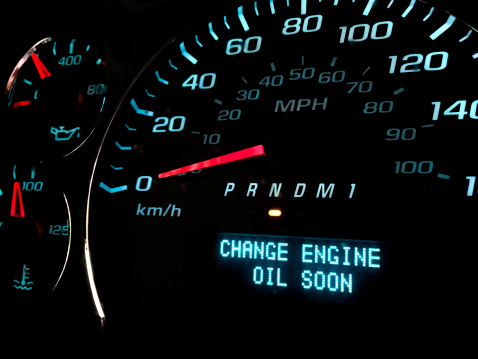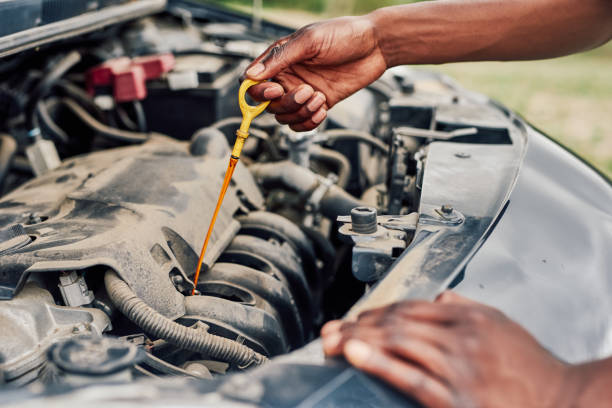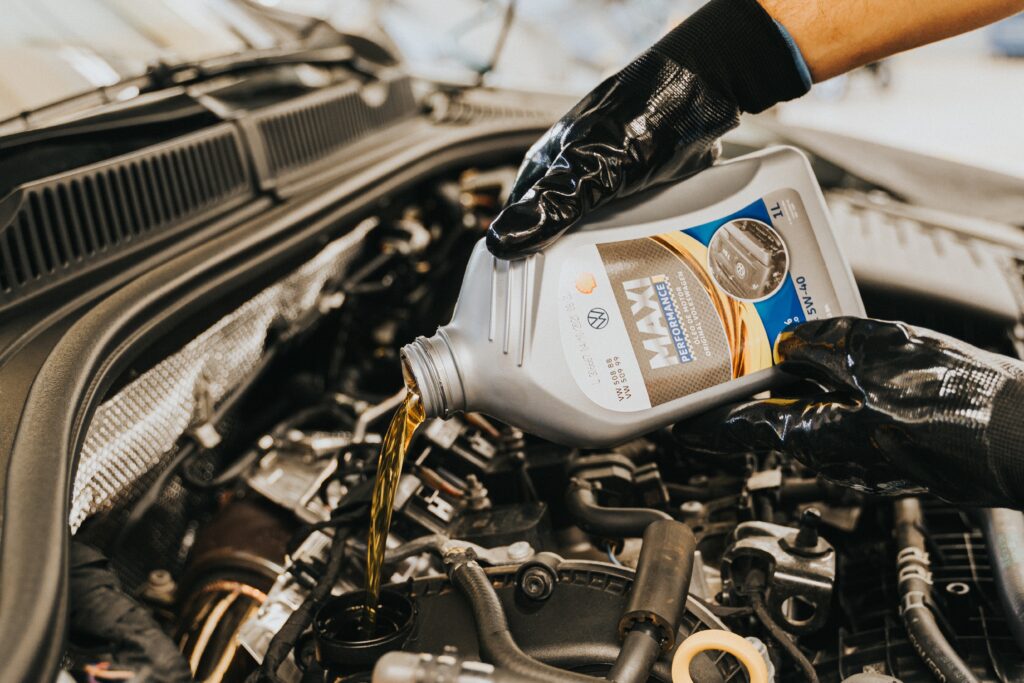

Many people will say once their car can take them from point A to point B, then it’s all good and there is nothing to worry about. In truth, however, there’s more to car ownership than getting from one location to another. A major part of the equation includes consistently checking your vehicle’s engine oil, and changing it regularly.
Guess what? Your car cannot properly function without engine oil. It lubricates, cleans, and protects internal engine parts from corrosion and reduces the damaging effects of friction. It also helps to regulate the engine temperature. However, like all engine fluids, oil deteriorates over time.
Car care professionals will tell you that regularly checking and changing your engine oil is the most important routine vehicle maintenance task. Can you say that you include it in your top priority car care regimen? If you don’t, please do.
Routinely checking and changing your car’s oil is essential to keeping the engine in running condition. It not only ensures that your engine runs properly, it saves you money on fuel and helps to reduce emissions. To put a figure to it, the general recommendation is that you should check and change your oil every 5,000 miles, once a month, or as suggested by car care professionals.

Not changing your engine oil can lead to severe engine damage.
As engine oil flows through the engine, it picks up natural by-products of friction and combustion such as metal particles and soot, as well as other contaminants like dust and fuel impurities. The fluid also contains additives that help prevent corrosion and oxidation.
Overtime, these additives degrade while contaminants will gradually saturate the oil and reduce its lubricating qualities. As this happens, friction inevitably takes its toll on your engine’s performance, and thus its fuel economy. Old and dirty oil also causes hydrocarbons to build up in the engine’s crankcase, forming “sludge.” This material, found at the bottom of the engine decreases the flow of oil, which can lead to poorer protection or even overheating of the engine.
WHAT HAPPENS IF YOU DON’T CHANGE YOUR ENGINE OIL?
Like all automotive fluids, engine oil gradually deteriorates. Viscosity breaks down, and it loses its lubricating qualities. An insufficiently lubricated engine risks overheating. This can lead to a variety of problems, like a blown head gasket, or warped engine parts. Additionally, the engine could seize up which means you’re at the stage of engine replacement. In short, the small cost of some regular maintenance could save you unnecessary expenses down the road.
SIGNS YOU NEED TO CHANGE THE ENGINE OIL

The “check oil” light on your dashboard is not the only indicator to change your engine oil. Other signs range from the oil’s texture to strange engine sounds, or even thick smoke coming out of your tailpipe.
- The first thing you should do is to check the oil and follow necessary steps to determine if it needs to be changed.
- Pay attention to your car’s exhaust. Excessive blue or grey smoke indicates an oil leak, often the result of old oil.
- Listen for strange sounds. If your car makes a ticking sound when you start it, or if it rattles and shakes while idling, there is a possibility your engine oil has degraded.
- Smell your car’s interior. Odours of motor oil or gasoline often indicate that your engine is leaking oil or overheating. Both are signs that your engine oil is no longer performing properly.
You can check and change your oil yourself or take it to your car care professional. If you choose to do it yourself, learn the necessary steps to drain the fluid, set the correct oil level and dispose of old oil.
You should also educate yourself about what type of motor oil is best for your vehicle, regardless of whether you change the oil yourself or not. It generally means considering the oil viscosity, whether to use synthetic versus non-synthetic oil, and your car’s mileage.

CHECK YOUR ENGINE OIL
It’s easy to check the engine oil on most car models. The procedure is nearly universal, but as always, consult your vehicle’s manual first or your car care professional. Here are the basic steps:
Step 1: Park your car on level ground which should ensure an accurate reading. Turn off your engine, and allow it to cool for 10 to 15 minutes.
Step 2: Open the hood and locate the dipstick. It’s usually marked by a yellow or red tab, and is near the fill cap.
Step 3: Remove the dipstick and examine the oil’s colour and texture. If it is a clear amber colour and clings to the dipstick, it’s in good condition. If it is black, opaque, milky, runny, or gritty, it’s time for a change.

Step 4: Using a paper towel or lint-free rag, wipe the dipstick clean, reinsert it for a few seconds, and remove it once more. This time, check the oil level. Indicator marks on the bottom of the dipstick will tell you if your oil level is too low, too high, or just right.
Step 5: Wipe the dipstick clean and reinsert it. If your engine is low on oil, open the fill cap and add more in small amounts, checking the dipstick until the oil is at the correct level. Replace the fill cap and close the hood.
HOW TO CHANGE YOUR ENGINE OIL
Step 1: Park the car on level ground, remove the keys from the ignition, apply the parking brake, and allow the car to cool down for 10-15 minutes.

Step 2: Locate the jack point underneath the front end of the undercarriage (refer to your vehicle’s manual if you cannot find it). Raise the car to a clearance of an estimated 46 centimetres. Place jack stands underneath the undercarriage on both sides of the car. If you are using ramps, line them up with the front wheels of your car and carefully drive the car up onto them. Then, secure the rear wheels with wheel blocks. Push down on the hood a few times to make sure the vehicle is secure.
Step 3: Open the hood and remove the oil fill cap. Place the drain pan underneath the oil reservoir. Using a wrench, unscrew the drain plug, remove the accompanying washer and allow the oil to drain out completely (about two to three minutes). Put the washer back in place, and carefully screw the drain plug back into the reservoir.
Step 4: Locate the oil filter under the hood. Twist it off counterclockwise by hand or with the oil filter wrench. Before installing the new oil filter, be sure to smear a small amount of oil on the filter’s gasket with your finger. Gently screw it clockwise.

Step 5: Pour the new oil into the fill hole under the hood. Replace the fill cap.
Step 6: Start the engine. If the oil pressure light on your dashboard is illuminated, you may have leaks. So, inspect beneath the car for leaks. They’ll most likely come from the drain plug or the oil filter. If you see any leaks, shut off the engine. Let it cool for 10 minutes, and tighten where necessary.
Step 7: Check the oil level with the dipstick. Add more as needed. Replace the fill cap and close the hood. Remove the jack stands, lower the car, and remove the wheel blocks. Be sure to dispose of used engine oil properly – don’t just put it out with your trash. Many auto parts stores and some service stations will take used motor oil and oil filters for recycling.
That’s it, in a nutshell.
Sounds pretty simple and easy to do, right? If you’ll prefer to have someone else change your vehicle’s engine oil, remember to use a trusted and reliable car care professional. At the very least, learnt the basics because you may be required to use the knowledge at some point.
This is the eighth article in the weekly series, ‘Car Care Tips’ where we highlight various aspects of a car, how to provide care and maintenance for optimal performance while ensuring safety. This series may feature your favourite mechanic or others from the motor vehicle industry.
Read the seventh installment of Care Care Tips below:
Car Care Tips | Check your headlamps, brake lights, and indicators
Send feedback to candicestewart@our.today







Comments